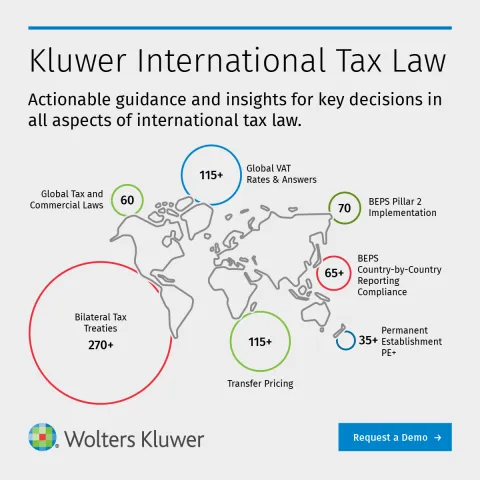Is Global Tax Deal a GILTI Victory?
July 18, 2025
On 28 June 2025, G7 published a statement exempting US headquartered multinational enterprises (“MNEs”) from Income Inclusion Rule (“IIR”) and Undertaxed Profits Rule (“UTPR”) in exchange for repeal of Section 899 that was contemplated as a retaliatory action against jurisdictions that apply “unfair taxes” such as UTPR. [1] A so-called side-by-side system which largely produces an equivalent result with recognizing the similar existing regime in the US (formerly known as GILTI, currently named as NCTI) as a Qualified IIR has been promoted. The statement also confirmed that side-by-side system is committed to address any material risk of unfair tax competition and to work for administrative and compliance simplifications with regards to the application of the global minimum tax. Concurrent with the G7 statement, on 3 July 2025, US Congress approved One Big Beautiful Bill Act (“OBBBA”) which introduces significant modifications in GILTI regime. [2] Given that there are several differences between GILTI and the IIR in terms of their current design, it is questionable whether considering GILTI as a Qualified IIR would not pose any risk of unfair tax competition. This article aims to compare the design of these two income inclusion regimes, to evaluate the key differences and to discuss possible modifications for co-existence.
Comparison of GILTI and the IIR
The IIR applies to the entities that are subject to line-by-line consolidation under the financial statements of the Ultimate Parent Entity provided that the consolidated revenue exceeds 750 million EUR in two of the four preceding fiscal years. [3] GILTI, however, applies to foreign companies that are controlled by one or more US shareholders including the individuals and importantly, there is no consolidated revenue threshold in GILTI. Accordingly, it can be argued that GILTI’s coverage is more onerous than the IIR.
When it comes to the income attribution, the IIR adopts top-down approach except the split ownership cases. Top-down approach requires the Ultimate Parent Entity to pay the top-up tax in an amount equal to its allocable share in its jurisdiction of residence. [4] On the other hand, GILTI applies to immediate shareholders (for example to intermediary holdings) and there is no requirement for the US shareholders to be the UPE. [5]
In terms of calculation mechanics, the IIR tax base is determined in line with generally accepted financial accounting rules whereas GILTI relies on US tax accounting rules. One of the most significant differences between the IIR and GILTI is their blending method while calculating the effective tax rate. The IIR applies jurisdictional blending method whereby GloBE income, adjusted covered taxes and substance-based income inclusion amounts of all in-scope entities in a jurisdiction is combined. GILTI, on the other hand, applies global blending where all foreign income and taxes are blended regardless of their jurisdiction paving a way for low-taxed income being sheltered by losses or tax credits generated from high tax jurisdiction. In this aspect, GILTI is more generous than the IIR and such flexibility remains as the biggest risk for level playing field that G7 intends to preserve it its statement.
As a well-known fact, global minimum tax rate under the IIR is set as 15%. There is no minimum tax rate threshold in GILTI as such, however, it can be roughly said that if the effective tax rate of foreign companies is above 14%, no additional top-up tax is expected. Before the application of OBBBA, this rate was 13.125%. Sec. 70321. Modification of deduction for foreign-derived deduction eligible income and net CFC tested income and Sec. 70312. Modifications to determination of deemed paid credit for taxes properly attributable to tested income of the OBBBA serve as the legislative basis for the implemented changes.
GILTI is ordinarily subject to US corporate income tax at a rate of 21%. However, taking into account the 40% deduction allowed by Section 250 of IRC (50% before the OBBBA) and foreign tax credit limit up to 90% (80% before the OBBBA), the effective GILTI rate is ends up with 14%. In this sense, the IIR seems relatively more onerous than the GILTI with one percent difference, nonetheless, it can be misleading to draw this conclusion without accounting for the effect of substance-based carve-outs. As discussed further in the following paragraph, substance-based carve-out in the IIR has potential to lead to an effective tax rate below 15% whereas recent changes in GILTI completely eliminates the Qualified Business Asset Investments (“QBAI”) carve-out resulting in a final effective tax rate of 14%.
The IIR provides a formulaic substance-based carve-out for asset-intensive and labor-intensive businesses. For FY 2024, substance-based income exclusion amount is determined by applying 9.8% to total payroll expenses and 7.8% to the total net book value of tangible assets. These ratios will decrease annually and will eventually be reduced to 5% both for the purposes of payroll and the tangible asset carve-out. [6] GILTI, on the other hand, used to have 10% QBAI carve-out over tangible assets only (without any payroll element). Sec. 70323. Rules related to deemed intangible income under OBBBA eliminates QBAI carve-out in its entirety. Policy reason for abolishing QBAI carve-out is that it encourages MNEs to invest assets abroad for more generous GILTI base. Therefore, with the recent developments, the IIR became materially generous than the GILTI in this design aspect.
Co-Existence and the Way Forward
Both GILTI and the IIR have the main policy objective of limiting the unfair tax competition. However, the design of both regimes when serving this purpose is materially different as articulated in previous paragraphs. One of the most significant differences is the blending approach. If both regimes will remain in their current form, non-US headquartered companies will be exposed to an unfavorable treatment since US headquartered MNEs will have the flexibility to shelter their tax liabilities from low-tax jurisdictions with taxes paid in high-tax jurisdictions. [7] This would inevitably harm the level playing field. During Pillar Two Blueprint public consultation phase, some commentators argued that the IIR should also apply the global blending approach for simplicity and for GILTI alignment. [8] Furthermore, compatibility of jurisdictional blending with the EU fundamental freedoms is still being debated and there are views that regional blending (in terms of freedom of establishment) and even global blending (in terms of freedom of capital) is more appropriate from the EU Law perspective. [9] In this sense, emphasize on preserving the level playing field and simplification of Pillar Two in G7 statement may be giving a signal that the IIR blending method will ultimately transform to the global blending.
Second most significant difference is the availability of substance-based carve-outs. Arguably, introduction of substance-based income exclusion in the IIR has partially undermined the policy objective of tackling tax competition as it still provides some room for substantive activities to be exempted from minimum tax. In this sense, eliminating QBAI in GILTI regime is more aligned with the policy objective. As opposed to the design in blending methods, design of formulaic carve-out provides comparative advantage to non-US MNEs which may equally harm the level playing field.
Furthermore, GILTI should be switched off for US intermediary parents of non-US MNE groups that apply the IIR in order for ensuring the level playing field and for avoiding from complex coordination rules. [10]
To sum up, it is not a direct conclusion that the IIR is more onerous than GILTI, especially after the recent changes. However, some design aspects such as blending method, carve-outs and income attribution must be revisited to ensure co-existence of both regimes without undermining the very first aim of putting a floor to the tax competition and creating a fair international tax system. The author ultimately reckons that it might be a timely opportunity to discuss adopting global blending approach in Pillar Two and to remove substance-based income exclusion in its entirety. In this way, the flexibility waived with the carve-out will be replaced by the flexibility offered by global blending and the level playing field will be better preserved by ensuring the harmonization of existing income inclusion regimes and thereby rendering the source of the MNEs irrelevant.
1- G7 Statement on Global Minimum Tax, 28 June 2025, https://home.treasury.gov/news/press-releases/sb0181
2- One Big Beautiful Bill Act (H.R. 1), 119th Congress, available at: https://www.congress.gov/bill/119th-congress/house-bill/1/text
3- OECD (2021), Tax Challenges Arising from the Digitalisation of the Economy – Global Anti-Base Erosion Model Rules (Pillar Two): Inclusive Framework on BEPS, OECD Publishing, Paris https://doi.org/10.1787/782bac33-en p. 8. Article 1.1.1
4- Ibid p. 11. Article 2.1.1
5- Aaron Junge and Ege B. Villeneuve, “Coordinating Pillar 2 With the U.S. GILTI Regime,” Tax Notes, 2 October 2020, available at: https://www.taxnotes.com/special-reports/global-intangible-low-taxed-income-gilti/coordinating-pillar-2-u.s-gilti-regime/2020/10/02/2d01h
6- OECD Model Rules, p50, Article 9.1.1, 9.1.2
7- Solyali, P. A comparative study between the GILTI, the CFC building blocks under BEPS Action 3 and the IIR under Pillar II: is the IIR an appropriate measure to address the remaining BEPS issues given the existence of other income inclusion regimes targeting the same income?, CIOT, p. 39.
8- Ibid.
9- Kluwer International Tax Blog, “Why All Top-Up Tax Variants in the EU Pillar Two Directive Collide with the EU’s Fundamental Freedoms and How to Solve This,” available at: https://kluwertaxblog.com/2025/06/16/why-all-top-up-tax-variants-in-the-eu-pillar-two-directive-collide-with-the-eus-fundamental-freedoms-and-how-to-solve-this/
10- Business at OECD Tax Committee, OECD/G20 Inclusive Framework on BEPS – Reports on Pillar One and Pillar Two Blueprints, para. 183 (2020)
You may also like






